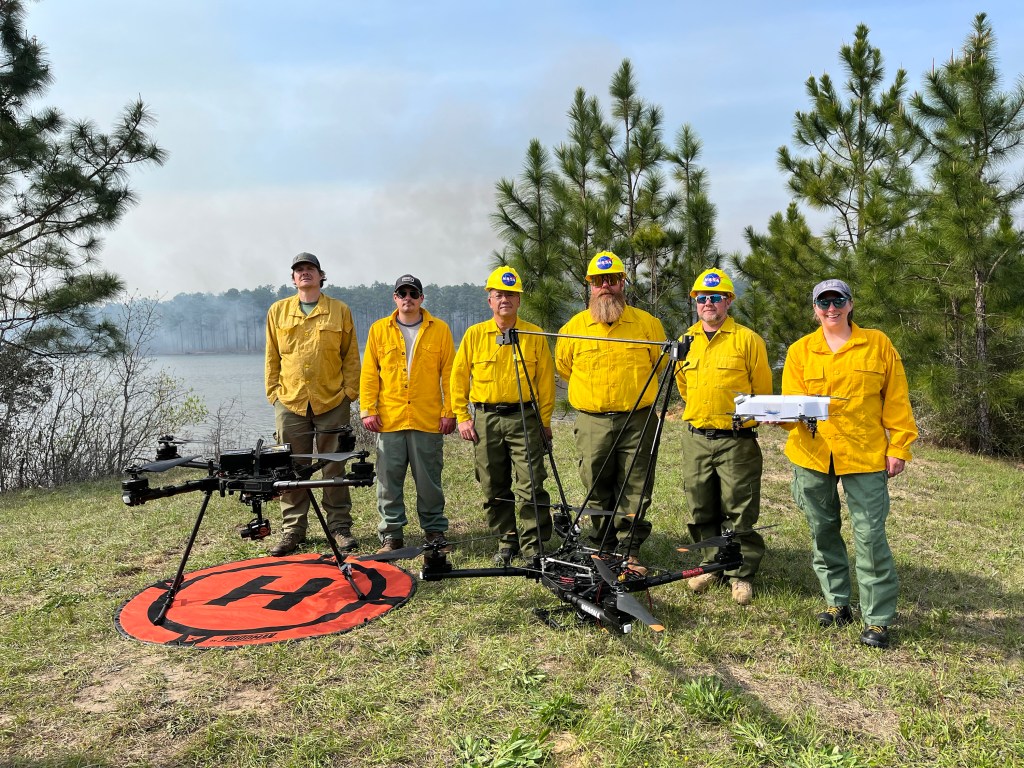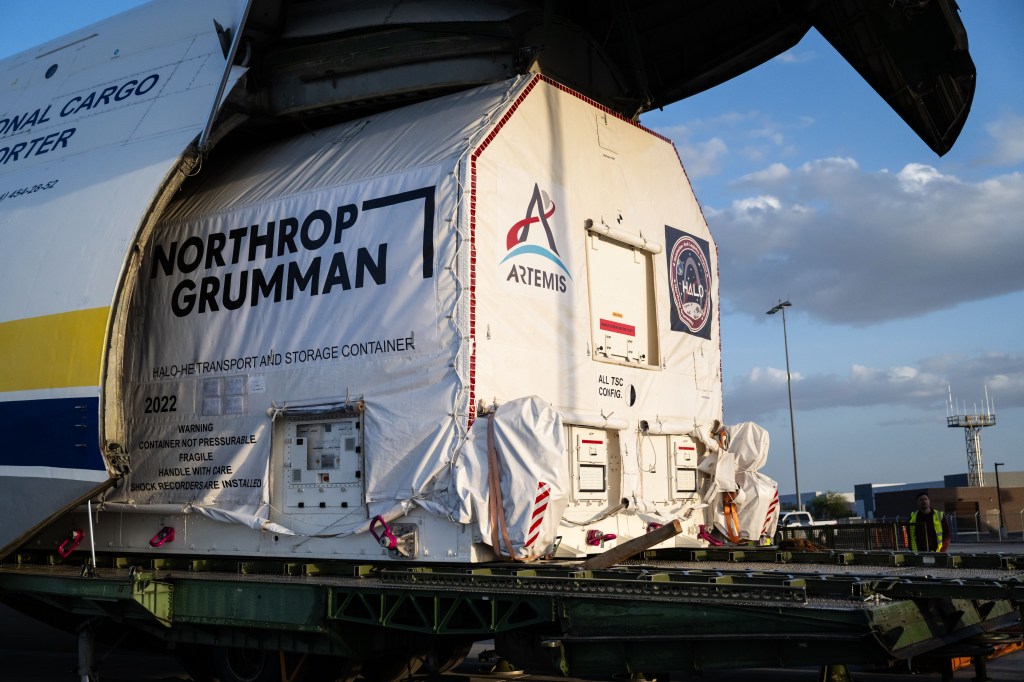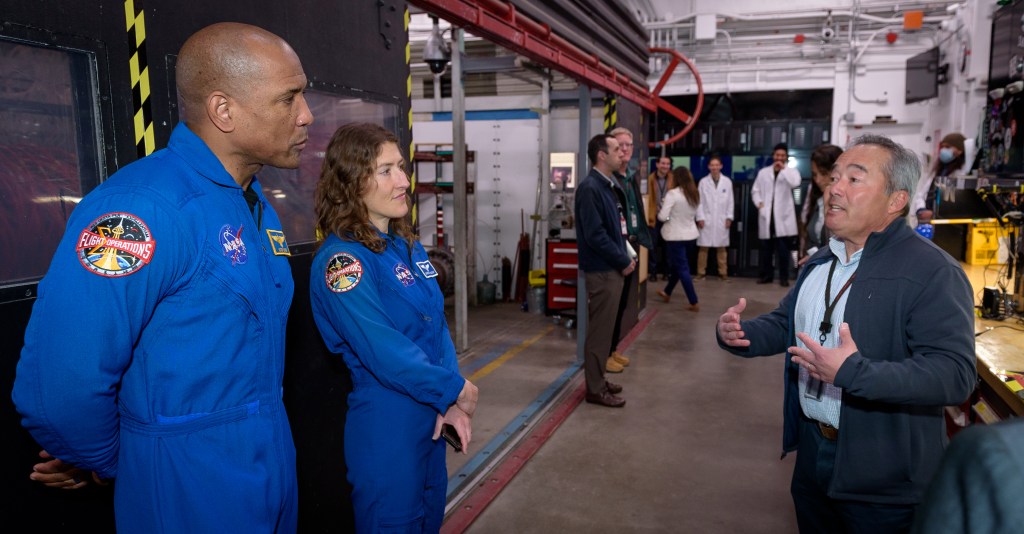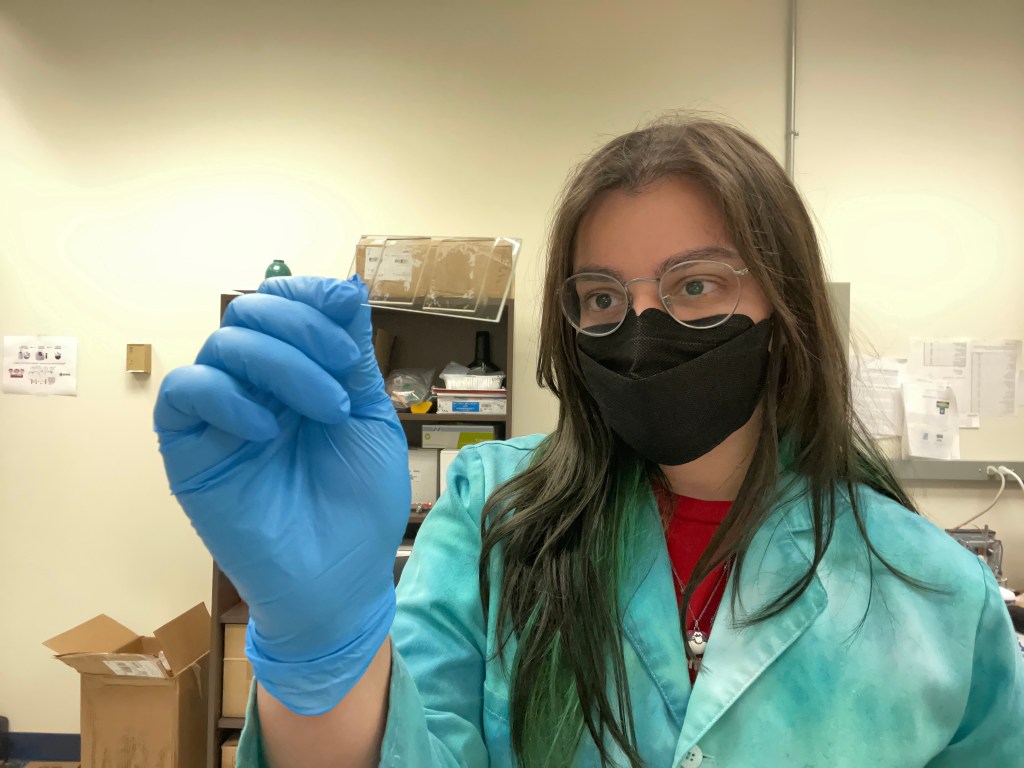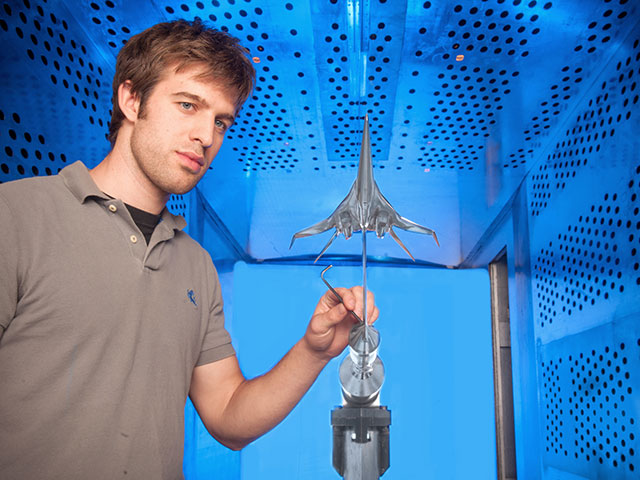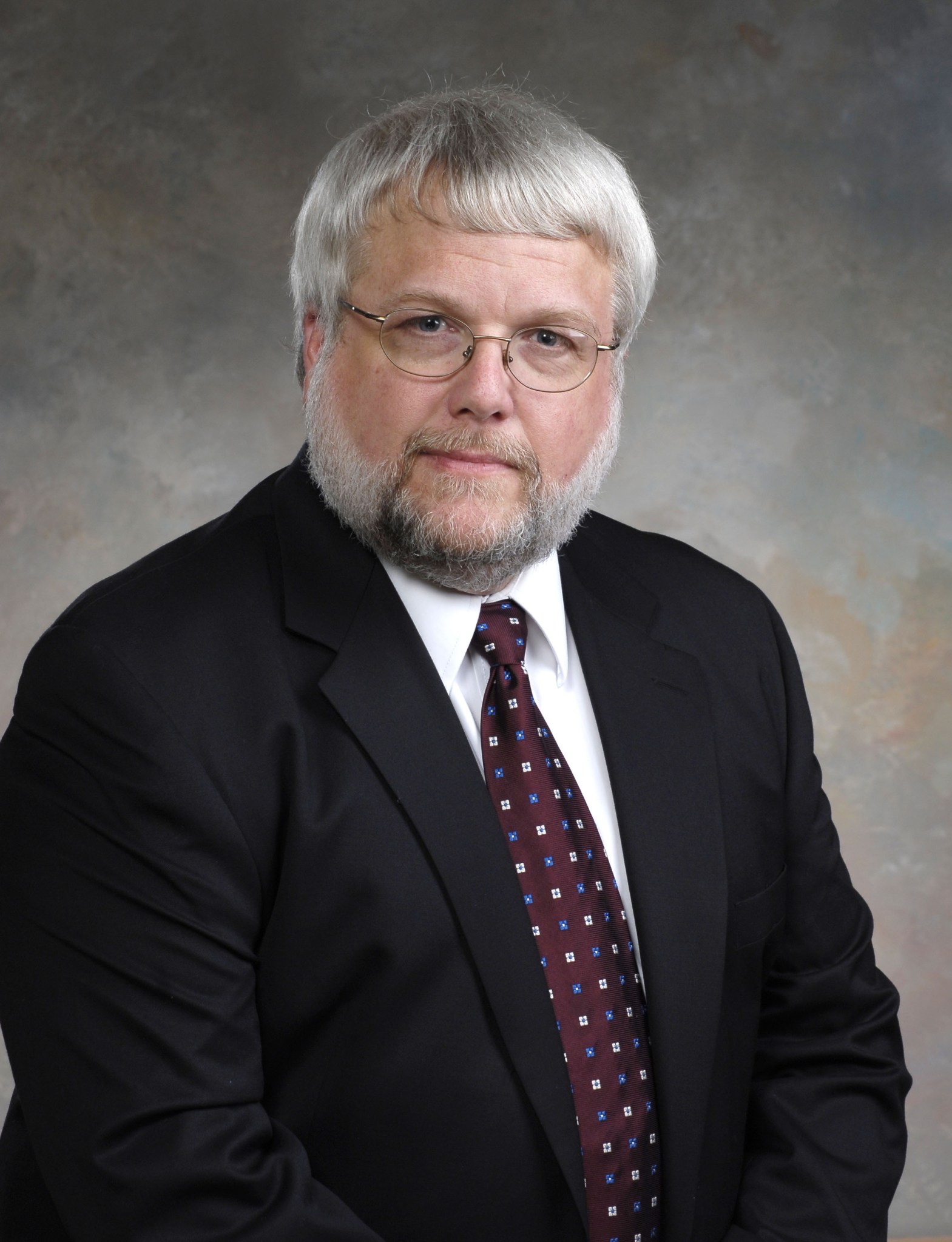In This Week’s Star
- Pete Allen Named Safety and Mission Assurance Directorate Deputy Director
- NASA, Department of Education Use Art to Share Journey to Mars Progress, Inspire Students
- Power Company: Marshall Joins Army in Redstone Arsenal Energy Awareness Event Oct. 20
- Marshall, NASA Astronaut Danny Olivas Celebrate Hispanic Heritage Month Oct. 12
- This Week in NASA History: 100th Space Shuttle Flight Launches — Oct. 11, 2000
- SLS Core Stage Simulator Loading Featured on ‘This Week @NASA’
- Obituaries
Pete Allen Named Safety and Mission Assurance Directorate Deputy Director
Pete Allen has been named to the Senior Executive Service position of deputy director of the Safety and Mission Assurance Directorate at NASA’s Marshall Space Flight Center. He assumes the position following the retirement of Steve Pearson. SES is the personnel system covering top managerial positions in federal agencies.
Allen will assist the directorate’s director, Rick Burt, in the planning and directing safety, reliability and quality engineering and assurance operations for Marshall.
With over 29 years of NASA experience, Allen has served in a number of technical management and leadership positions of increasing responsibility spanning space science, human spaceflight, safety and mission assurance and institutional operations.
He joined Marshall as a pressure systems engineer in 1987 before holding multiple leadership positions — including chief of the Facilities Office Mechanical/Electrical Branch, chief of the Facilities Office Engineering Division and deputy manager of the Facilities Office.
The Facilities Office was subsequently named Facilities Engineering Department, and in 1997 Allen was named the department’s manager, responsible for oversight and management of Marshall’s infrastructure, a multi-million-dollar budget and a workforce of over 600 civil servants and contractors.
In 2001, he was selected by the director of the Center Operations Directorate to establish and lead a new Integrated Customer Support Department to integrate all Center Operations services and products into a consistent and effective customer-focused delivery process.
A year later, he was chosen to participate in NASA’s SES Candidate Development Program where he completed numerous leadership development courses and multiple developmental assignments within the agency and in private industry. He graduated from the program in 2005 and received full SES certification from the Office of Personnel Management.
Allen served for three years as technical assistant to the engineering director, representing the Engineering Directorate in space shuttle transition planning as well as chairing a Source Evaluation Board selecting one of the directorate’s prime contractors.
He was assigned to the Ares Upper Stage Element Office in 2009, as the contracting officer representative for the Ares Upper Stage Production Contract. Allen oversaw and directed all contractor activities working on the design, development and production of the upper stage element.
For the last five years, Allen has been the SMA Safety and Quality Department manager responsible for providing quality assurance coverage for all in-house flight hardware production and testing and institutional safety at Marshall and NASA’s Michoud Assembly Facility. He has also managed Marshall’s extensive pressure system certification program.
Allen had seven years of private industry experience with Teledyne Brown Engineering, Inc. of Huntsville, and Martin Marietta Energy Systems, Inc. of Bethesda, Maryland.
The Auburn, Alabama, native earned a bachelor’s degree in mechanical engineering from Auburn University in 1979 and a master’s degree in management from the Florida Institute of Technology in Melbourne in 1992. Allen is also a licensed professional engineer in the state of Alabama.
He and his wife Jane live in Madison, Alabama, and have two children and a grandchild.
NASA, Department of Education Use Art to Share Journey to Mars Progress, Inspire Students
By Christopher Blair
If a picture is worth a thousand words, then what better way to share NASA’s Journey to Mars than with a space-themed mural painted on the side of a bus traveling across the country?
Secretary of Education John King Jr. recently conducted the “Opportunity Across America” bus tour, which traveled from Washington to New Orleans, with stops in 11 cities across six states. The tour engaged students, teachers, parents and school leaders to raise awareness about the importance of access to higher education and opportunities in the STEAM fields of science, technology, engineering, art and mathematics.
This year’s tour included a fun, new hands-on activity — communities were asked to draw what opportunity means to them on the side of the bus. Cue Dan O’Neil, an artisan by hobby and a technical manager at NASA’s Marshall Space Flight Center.
While the bus visited Huntsville, affectionately known as “Rocket City, USA,” O’Neil added to the mural what “opportunity” means to the nation’s space agency. His contribution, which took three hours to complete, featured references to NASA’s Space Launch System — the nation’s next deep-space exploration rocket — as well as 3-D technology, astronauts, terrestrial habitats, all-terrain vehicles and much more.
“One of NASA’s ongoing objectives is to inspire young people in their educational pursuits, so I’m glad I could pay it forward,” said O’Neil. “During middle-school, art was my favorite subject and in college I enrolled in drawing and sculpting classes. Throughout my career, I have applied art skills to create presentations, product proposals, data visualizations and computer simulations.”
While O’Neil’s contribution to the mural helped put the “A” in STEAM education, it also shows how creative hobbies can transition into real-world careers. The arts have always played an important role at NASA. The agency uses many graphic artists, web designers, photographers, videographers and more. These careers inform the public about space exploration and scientific discovery through creative storytelling, computer animation, dramatic imagery, informative posters, media products and more.
“Drawing and 3-D computer modeling helps create detailed presentations and web apps to convey complex ideas,” said O’Neil. “Applying skills such as storytelling, illustration and 3-D modeling enables me to express strategic ideas in a visually interesting manner.”
Beyond emphasizing STEAM subjects and careers, the Opportunity Across America bus tour offered people a chance to speak with leaders about best practices to improve access to digital technology and increase graduation rates.
“Through investment in comprehensive and innovative educational opportunities, NASA expands equality for all students to participate, including the disadvantaged or geographically isolated,” said Johnny Stephenson, director of the Office of Strategic Analysis and Communication at Marshall. “We were honored to continue our involvement with the secretary’s tour encouraging student success in the classroom and in their careers.”
Open-forum discussions and events, like the bus tour, can help inspire future generations of scientists, engineers and explorers, ensuring our nation’s capabilities for success in the 21st century.
Thinking about his enjoyment of combining the arts with technology, O’Neil suggests that students “think about the fascinating aspects of your hobbies and ask how they could be leveraged toward a future career.”
To learn more about the U.S. Department of Education, click here.
To learn more about Marshall’s Academic Affairs Office, click here.
Blair, an ASRC Federal/Analytical Services employee, supports the Office of Strategic Analysis & Communications.
Power Company: Marshall Joins Army in Redstone Arsenal Energy Awareness Event Oct. 20
By Kenneth Kesner
Where electricity and water are concerned, Tim Austin wants everyone working at NASA’s Marshall Space Flight Center to feel right at home.
At home, conservation is a habit. Without even thinking about it, most people take action to not waste electricity — and their money, said Austin, manager of the Energy and Water Program in the Marshall Office of Center Operations Facilities Management Office. At home, people don’t leave lights on in empty rooms or overnight unless they’re needed, thermostats aren’t constantly readjusted and water isn’t left running from a faucet or leaky pipe.
“We want Marshall team members to bring those same habits to work,” he said.
That’s a message he hopes everyone takes away from an Energy Awareness Month event to be held from 10 a.m. to 2 p.m. Oct. 20 in the food truck corral area, at the corner of Rideout and Martin roads — or Oct. 25 in the event of rain.
It’s an opportunity to learn more about steps Marshall is taking to conserve resources, he said, and also an opportunity to just have fun. Marshall, the Army Materiel Command and members of Team Redstone, the U.S. Space and Rocket Center, the University of Alabama in Huntsville and other community partners and vendors will have a variety of displays, including electric vehicles, a mobile unit for power production that can be carried by a soldier and new energy-saving technologies available for the home. The nonprofit Nexus Energy Center of Alabama will also be returning with their “greenest tiny home in Alabama” for the event’s second year.
Marshall’s annual spending on electricity, gas, water and other utilities has held steady around $20 million over the last few years because, as rates have gone up, the center has managed to decrease consumption, said Rhonda Truitt, an energy engineer employed by Kaya Engineering in the Facilities Management Office. The “repair by replacement” of some aging buildings with modern ones that have earned Leadership in Energy and Environmental Design certification from the U.S. Green Building Council has helped. So has technology such as the solar panels at Buildings 4600 and 4220, and the LED lights that are replacing fluorescents and other inefficient lamps across Marshall, where appropriate.
But small, individual conservation efforts — like turning off a task light when leaving for the day — cost nothing and result in appreciable savings when multiplied by a few thousand employees. Every dollar saved is a dollar that can be reinvested elsewhere at Marshall, she said.
But there is another big reason why employees should think of Marshall’s electric bill as their own: “Marshall employees pay for the power here through their taxes, just like they pay for power at home,” Truitt said. “It’s not ‘free’ energy. It’s tax dollars at work.”
Marshall is also expected to meet federal mandates for conservation and sustainability, said Shannon Fulenwider, architectural project manager and sustainability champion in the Facilities Management Office. The last set of federal goals called for a 30 percent overall reduction in energy use at Marshall from 2007-15. Marshall came in at a very respectable 29.4.
“That’s where people turning off their lights and their space heaters and being just a little bit more energy efficient could have made the difference,” Fulenwider said.
The latest federal goals, issued in October 2015, call for an additional 25 percent in facility energy reductions over the next decade. It’s more difficult now because the most wasteful Marshall infrastructure has already been dealt with. Now, it’s going to take everyone’s help, she said.
She urges anyone who has a conservation issue — broken motion-sensor light switches, leaking water lines, lights left on that don’t seem to be needed — to contact their building manager; report the problem on the Energy and Water Program’s web page; or call 256-544-3919.
Kesner, an ASRC Federal/Analytical Services employee, supports the Office of Strategic Analysis & Communications.
Marshall, NASA Astronaut Danny Olivas Celebrate Hispanic Heritage Month Oct. 12
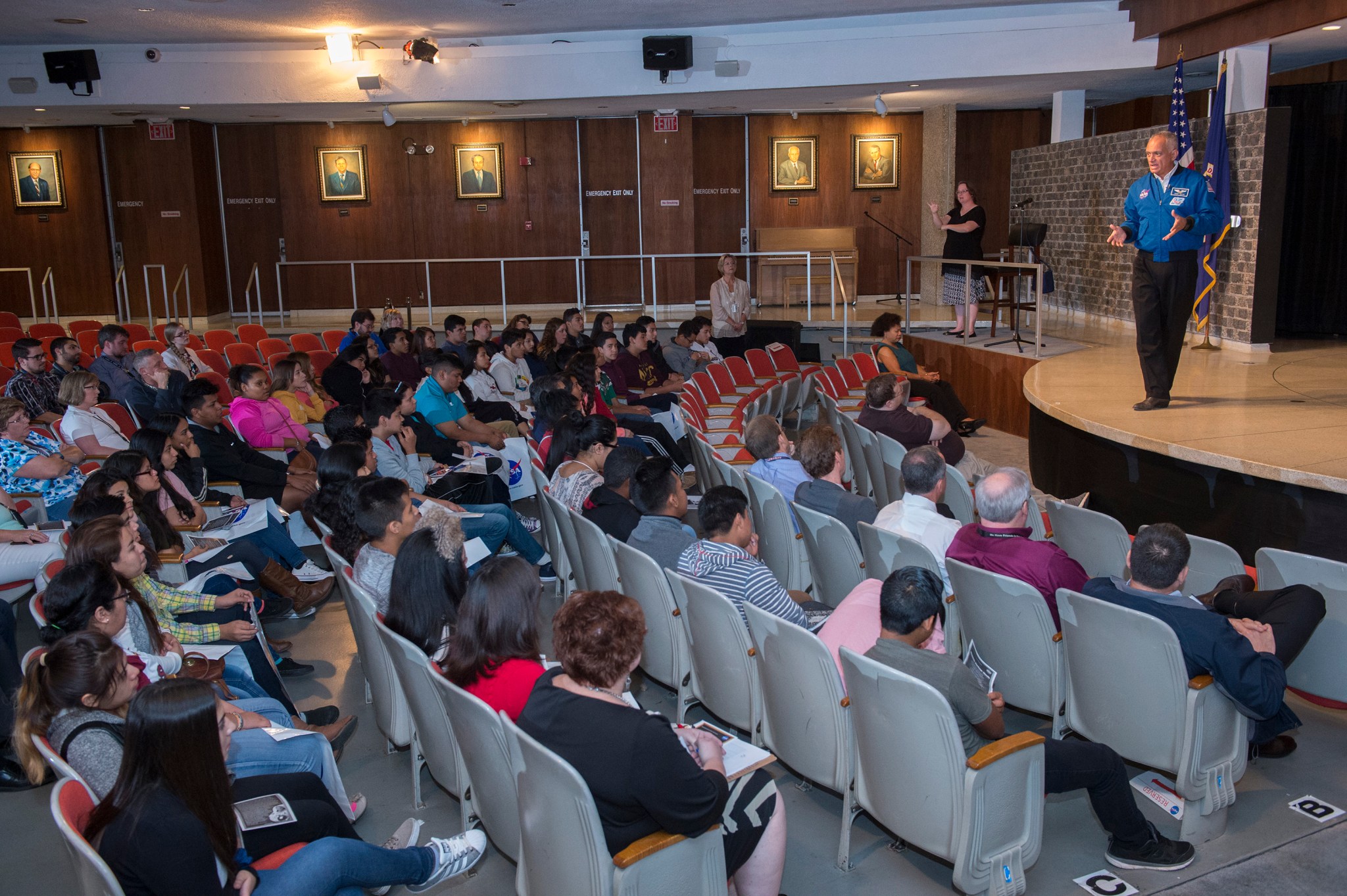
Danny Olivas, former NASA astronaut and veteran of two space shuttle missions, gives the keynote address Oct. 12 during a National Hispanic Heritage event for team members of NASA’s Marshall Space Flight Center. Titled “Innovations that Embraced, Enriched, and Enabled America,” the event was held in Morris Auditorium, Building 4200, and celebrated the many contributions and successes of Americans whose ancestors originated from Spain, Mexico, the Caribbean and Central and South America. National Hispanic Heritage Month is celebrated from Sept. 15-Oct. 15 each year. Todd May, Marshall Center director; Paul McConnaughey, associate director, technical, supporting Marshall’s Office of the Center Director; and Loucious Hires, director of Marshall’s Office of Diversity and Equal Opportunity, also addressed the crowd. (NASA/MSFC/Emmett Given)
This Week in NASA History: 100th Space Shuttle Flight Launches — Oct. 11, 2000
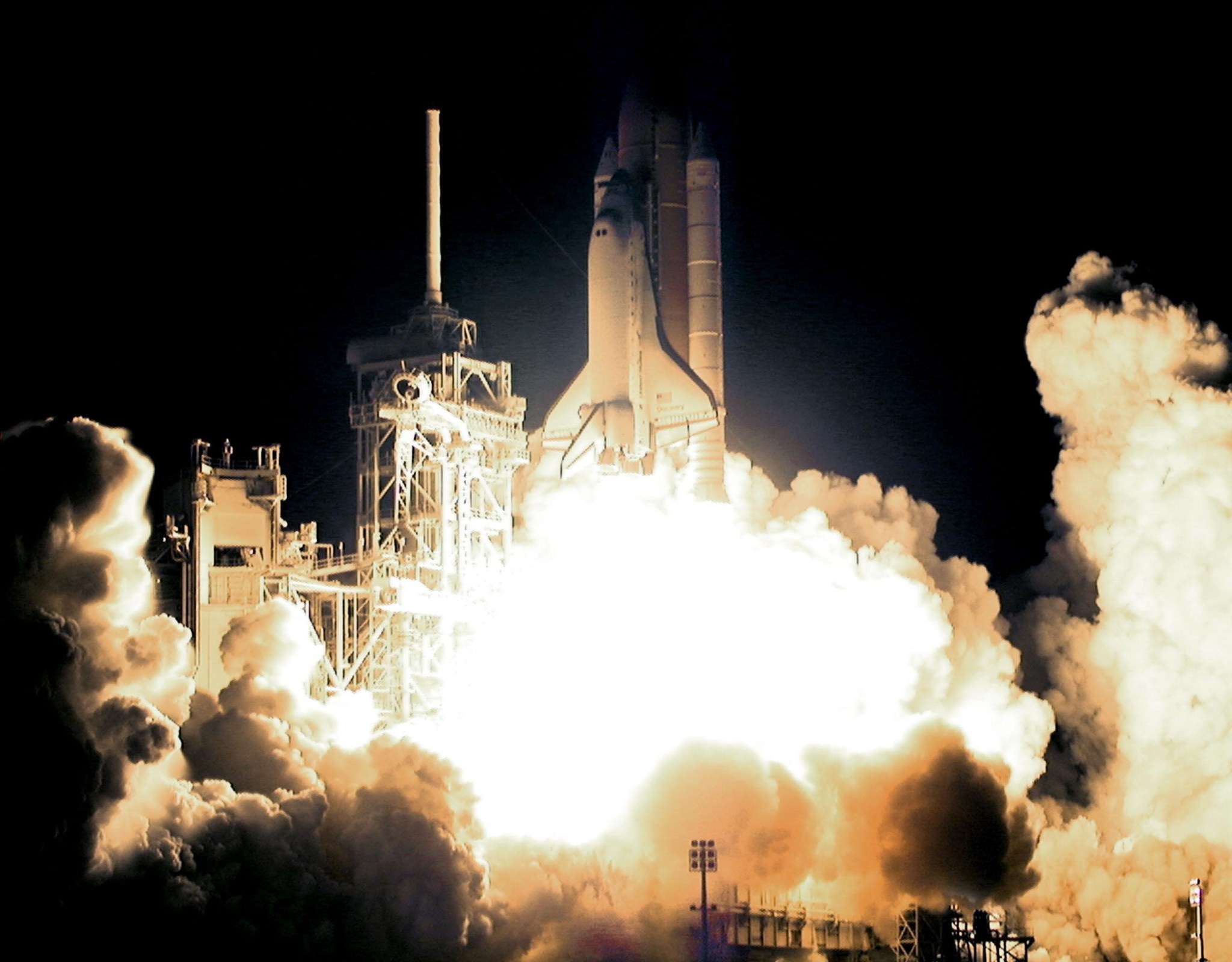
This week in 2000, space shuttle Discovery and STS-92 launched from NASA’s Kennedy Space Center on the 100th flight of the space shuttle program. The first shuttle mission launched in April 1981, and for the next 30 years the program’s five spacecraft carried people into orbit repeatedly, launched, recovered and repaired satellites, conducted cutting-edge research and built the largest structure in space, the International Space Station. The NASA History Program is responsible for generating, disseminating and preserving NASA’s remarkable history and providing a comprehensive understanding of the institutional, cultural, social, political, economic, technological and scientific aspects of NASA’s activities in aeronautics and space. For more pictures like this one and to connect to NASA’s history, visit the History Program’s webpage. (NASA)
SLS Core Stage Simulator Loading Featured on ‘This Week @NASA’
The fitting of a core stage simulator for NASA’s Space Launch System into a new test stand at the Marshall Space Flight Center is featured in the latest edition of “This Week @NASA,” a weekly video program broadcast nationwide on NASA-TV and posted online.
On Sept. 21, a simulator of the SLS core stage, designed and built at Marshall, was lifted and lowered into a newly constructed 65-foot-tall test stand, in preparation for a series of rigorous stress tests with hardware for SLS and NASA’s Orion spacecraft. The testing, which is scheduled to begin in January, is designed to ensure the SLS rocket can withstand the incredible forces that occur during a launch.
SLS will be the world’s most powerful rocket, able to ferry astronauts on deep-space missions in the Orion to Mars, an asteroid and beyond.
View this and previous episodes at “This Week @NASA” or at https://www.youtube.com/user/NASAtelevision.
Obituaries
Charles O. Jones, 80, of Huntsville, died Sept. 28. He retired from the Marshall Center in 1996 as an aerospace engineer. He is survived by his wife, Anita Jones.
Robert L. Middleton, 85, of Huntsville, died Sept. 30. He retired from the Marshall Center in 1990 as an aerospace engineer. He is survived by his wife, Helen Coppedge Middleton.
Claude C. Boykin Jr., 87, of Huntsville, died Oct. 5. He retired from the Marshall Center in 1988 as an electronics engineer. He is survived by his wife, Henrietta A. Boykin.


